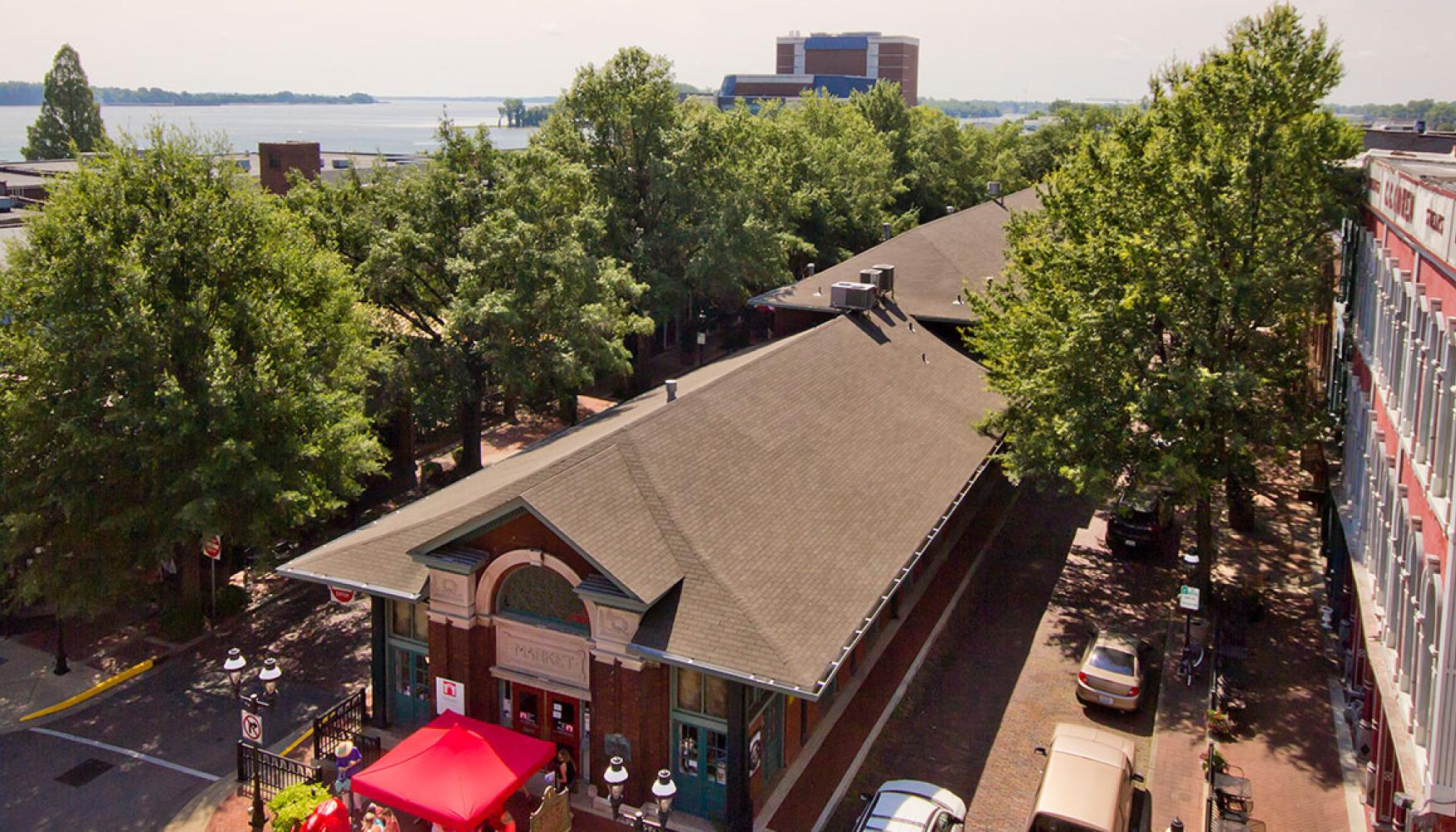Resources
- Historical Markers - Select McCracken County for the Paducah area information from the Kentucky Historical Society about State markers and their text.
- Monuments and Memorials - This link includes a list of the various monuments and memorials in Paducah which includes dozens of monuments and memorials that honor veterans and other aspects of local history. The World War II, Korean War, and Vietnam War memorials are located at Dolly McNutt Memorial Plaza located at 301 South 5th Street.
- Check out the book "Historic Architecture of Paducah and McCracken County" written by Steve G. Gabany at the McCracken County Public Library. Plus, look for many more books that highlight Paducah's rich history.
History of Paducah
McCracken County was originally part of Hickman County, but as population growth occurred, the territory was divided into Hickman, Graves, Calloway, and McCracken Counties. McCracken County was formed on January 15, 1825 and was named after Captain Virgil McCracken, who was killed at the Battle of the River Raisin during the War of 1812. In 1832, Paducah became the county seat of McCracken County.
Paducah, originally known as Pekin, was settled around 1815. Settlers were attracted to the community due to its location at the confluence of the Ohio and Tennessee Rivers. The community was inhabited by a mix of Native Americans and Europeans who lived harmoniously, trading goods and services.
In 1827, William Clark, Superintendent of Indian Affairs for the Mississippi-Missouri region, arrived in Pekin with a title deed to the land he now owned, which was issued by the United States Supreme Court. Clark most likely took stock of the settlers that had arrived at some point before himself, and offered the land for purchase, so they could occupy it with title in their name. If they did not choose to purchase the right to occupy the land, they most likely relocated to another domicile. The town was platted out and named in honor of the largest nation of Native Americans that ever roamed North America, the Padouca Indians. Lewis and Clark had made acquaintance with many of them while on their trek west. A letter written by Clark to his son clearly states the reason for the naming of the town. (A facsimile of the letter and the original Paducah maps are on display at the Market House Museum in Paducah.) The community was incorporated in 1830.
Paducah thrived due to its port facilities along the waterways that were used by steamboats. A factory that manufactured red bricks was established and a foundry for making rail and locomotive components was built, ultimately contributing to a river and rail industrial economy.
In 1856, Paducah was chartered as a city. The community continued to capitalize on its geographic location by becoming the site of dry dock facilities for steamboats and towboats and, in turn, headquarters for various bargeline companies. Paducah also became an important railway hub for the Illinois Central Railroad (ICRR) due to its proximity to the coal fields in Kentucky and Illinois.
In 1937, the Ohio River at Paducah rose over its 50-foot flood stage. The flood was considered to be the worst natural disaster in Paducah’s history. As a result of the flood, the United States Army Corps of Engineers built a flood wall to replace the earthen levee that had once been in place.
Other significant events in the community’s history include the selection of Paducah in 1948 for the development of a new Uranium Enrichment Plant, and the development of the Museum of the American Quilter’s Society (MAQS) in Paducah in 1991, which draws quilters from around the world.
Paducah has several Museums to educate and entertain, such as the Paducah Railroad Museum, the Inland Waterways Museum, the Tilghman Civil War Museum, and the oldest, the William Clark Market House Museum, founded in 1968. Several Festivals such as the American Quilter's Society Quilt Show and Contest in April (AQS QuiltWeekTM), the LowerTown Arts & Music Festival in May, and BBQ on the River in September attract large crowds for the fun and food.
